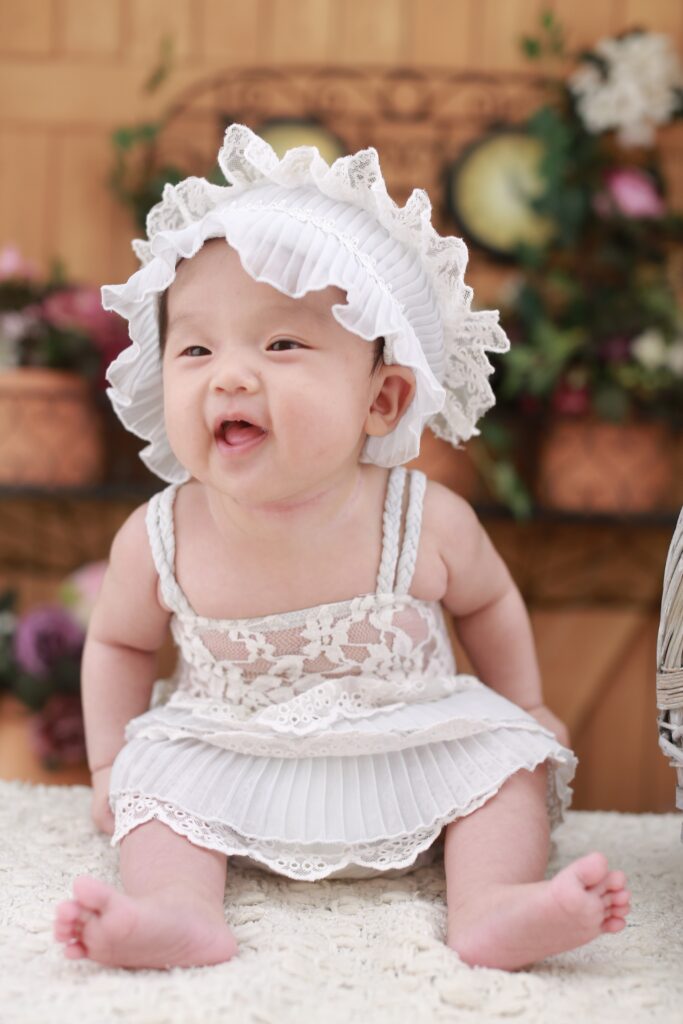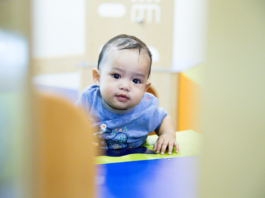Some baby noises nyt – Learn more with Healthier Me Today! Hello, fellow parents and devoted nannies! We are exploring the enchanted realm of some baby noises nyt today.
Those endearing gurgles, giggles, and coos appear to have a language. We all know how fascinating and precious it is to hear our little joys making these sounds because we are parents.
Have you ever considered the meaning behind those some baby noises nyt, though? Join me as we examine ten significant implications behind a few typical infant noises.
Get ready to learn how to comprehend better and connect with your priceless children.
Table of Contents
1. Coos Are A Happy and Contented Expression

Any parent will find the sound of cooing to be delightful. Your infant cooing is an expression of unadulterated delight and joy.
This is how they’re telling you that they feel secure and loved in your arms to promote more conversation and deepen your emotional bond. Smile back at them when they coo.
2. Laughter Means Adopting Playfulness
Ah, a baby’s contagious giggles! Those endearing laughter are an obvious sign of happiness and delight; they are not just random noises.
Babies laugh when they find something humorous or engage in playtime interaction with you. So go ahead and play around ridiculous to keep the laughter going.
So go ahead and play goofy games to keep them laughing; it’s therapeutic for us parents as well as fun for them.
3. Cries Are A Way of Expressing Needs

Although some baby noises nyt might occasionally leave us feeling helpless, they are crucial for newborn communication.
They use crying to communicate with us when they require anything, whether food, a diaper change, rest, or a hug.
Understanding the various cries will help you respond to their demands quickly, improving the comfort and stress-free of both of your life.
4. Flubbing as You Get Ready to Speak
Pay close attention when your baby begins to babble since they create the foundation for their language development.
Babies experiment with sounds, tones, and rhythms during babbling, similar to a small speech laboratory.
You might encourage their babbling by enthusiastically responding and repeating the sounds back to them. This will increase their self-assurance and inspire them to learn more languages.
5. Grunts and Groans Are Just Them Getting Around in the World
Your baby might grunt and groan occasionally, significantly, when being changed or trying to move. These sounds also have a function!
They show that your child is learning to navigate their environment and adjusting to their body.
Encourage them as they face the thrilling challenge of growing up the next time you hear some baby noises nyt!
6. Developing Reflexes Such as Hiccups
Hip-hopping is crucial to a baby’s development and is not just something that amuses us grownups.
Babies experience hiccups as their digestive and respiratory systems mature, which aids in developing their reflexes.
Don’t worry if your kid gets the hiccups; it’s just a normal stage in their cute and healthy growth path.
7. Squeals Mean A Joyful or Surprised Expression

Have you ever heard a high-pitched squeal from your child that seemed to come from nowhere? T
hey convey their joy and surprise with these lovely noises.
Their squeals express their excitement for the world around them, whether they have found their reflection in a mirror or noticed a bright toy.
8. Developing Oral Motor Skills via Blowing Bubbles
Babies’ interest in blowing bubbles isn’t simply adorable; it also aids their growth.
Babies’ oral motor abilities, essential for later speech development, are bolstered by blowing bubbles.
So when your child blows bubbles while taking a bath, think of it as a first step toward their talking to you in the future!
9. Humming is to Calm Oneself
Especially when they are about to fall asleep or feeling a little overburdened, you might discover your child quietly humming to themselves.
Babies use humming as a self-soothing technique to feel safe and at ease. Accept this soothing behavior because it helps children develop emotional resilience early on.
10. Sharp Screams are Exploring the Vocal Range

You could notice that as your child develops, they experiment with their vocal range, producing high-pitched shrieks.
Some baby noises nyt are crucial in their investigation and comprehension of their voice.
While it occasionally seems noisy, it’s an exciting step on their path to finding their distinctive voice and identity.
11. Developing Your Child’s Speech
As parents, we excitedly anticipate the day when our children begin speaking and can’t wait to hear their adorable voices utter their first words.
However, each child’s path to speech development is distinct, and some may require more time to complete than others.
While it’s essential to be patient and upbeat, there are times when we also need to be watchful of their development.
Let’s discuss when to watch your child’s speech development and what you can do to encourage some baby noises nyt.
1. Spotting Speech Delay Potential
Each child develops at their rate, although several symptoms could indicate a possible speech delay.
It’s crucial to pay notice if, by the time they are 12 to 18 months old, your child isn’t babbling, trying to imitate noises, or performing simple motions like waving or pointing.
A lack of responsiveness to their name or restricted eye contact could also be warning signs, as could difficulties adhering to straightforward directions.
Consult a doctor or a speech-language pathologist for a qualified evaluation if you see any of these symptoms.
2. Early Intervention’s Purpose
When it comes to correcting speech problems, early intervention is crucial.
Early intervention treatments can significantly enhance your child’s language and overall communication skills if a deficit exists.
Your kid can work with speech therapists, occupational therapists, or early intervention specialists to create individualized plans and exercises that will support their speech development.
3. Interacting With Others in Communication

If you want to encourage your child’s speech development, you must create a setting that is full of interactive dialogue.
Even if your child isn’t speaking, have frequent chats with them. Use straightforward language, repeat words, and invite children to respond with sounds or gestures.
Play verbal engagement games with them, such as naming nearby items or peek-a-boo. These interactions expose them to language in a helpful way and pique their interest in speaking.
4. Reading Together Fosters Language Bonds
Reading aloud to one another is one of the best strategies to encourage some baby noises nyt for speech development.
Pick books for your child’s age with lively illustrations and exciting plots. Encourage your youngster to do the same by pointing to the visuals and naming things as you read.
In addition to teaching new words, reading encourages a love of language and education.
Meanings Behind Some Baby Noises Nyt…
A vital tool for language development is music. Your youngster is exposed to the rhythm and melody of language when you sing nursery rhymes and kids’ songs.
Because verses are repeated, children can better notice patterns and develop their phonemic awareness.
Additionally, singing together is a fun way to bond and promote social interaction.




